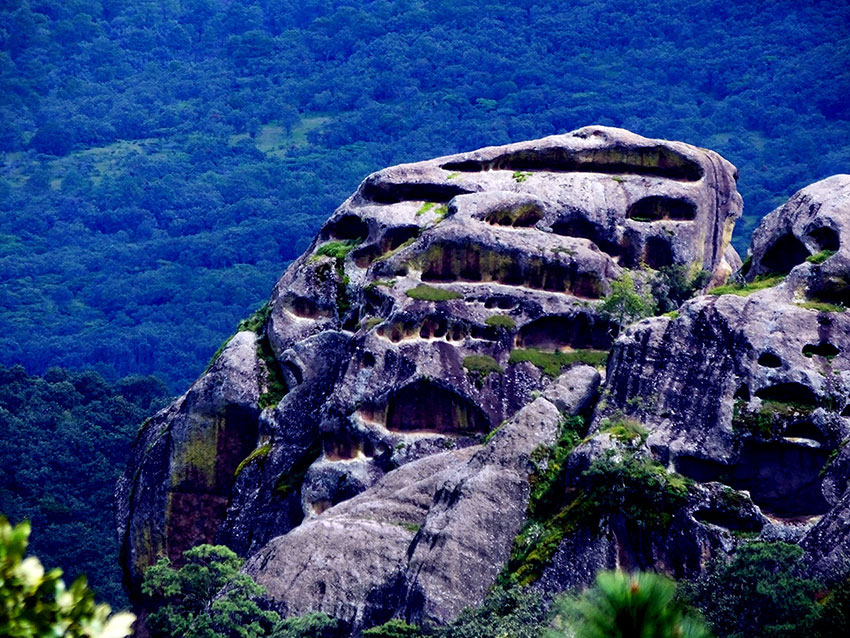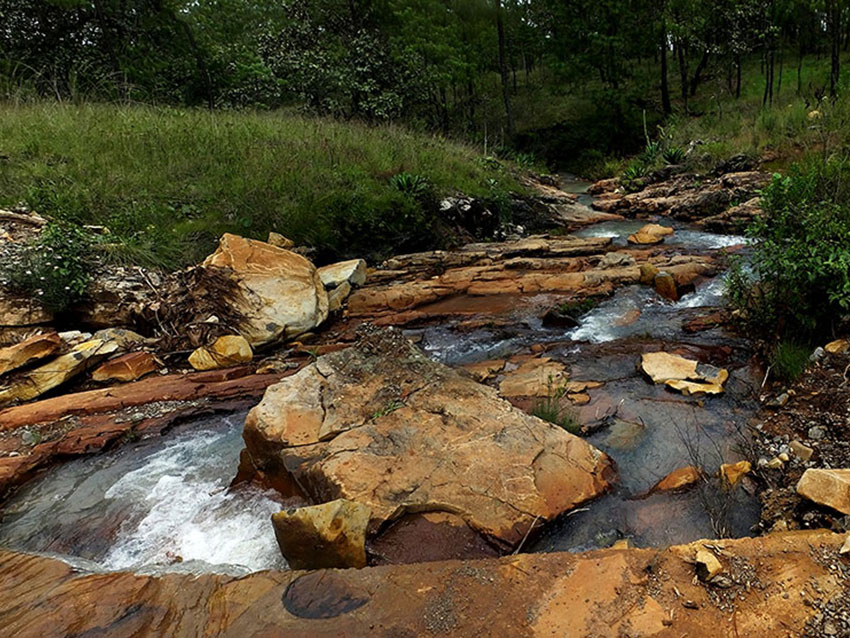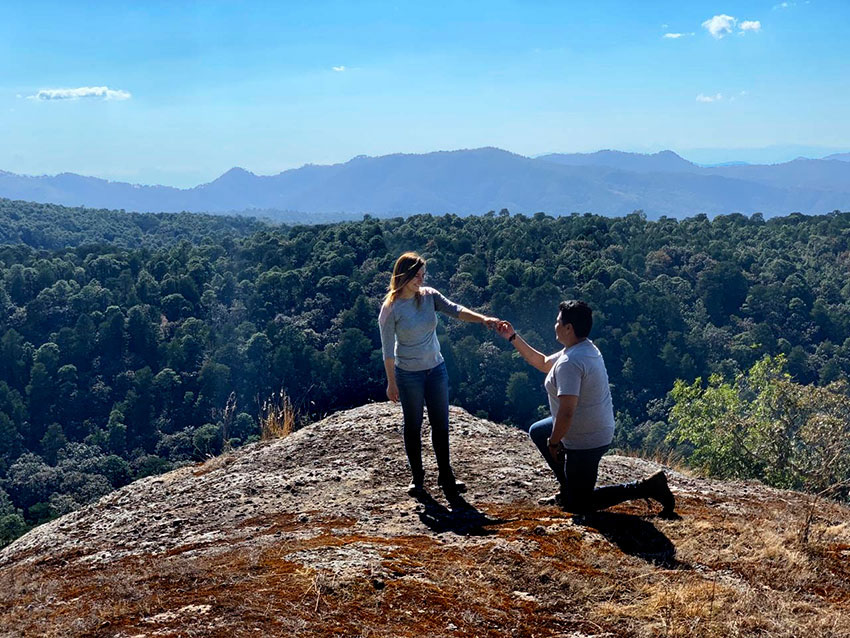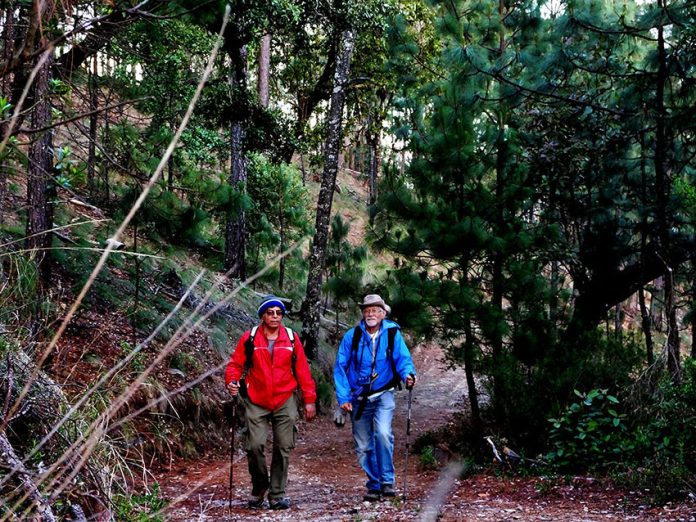Visitors to the Pueblo Mágico of Tapalpa, in Jalisco, inevitably wander outside the town to see the area’s famed Piedrotas or Great Rocks.
Few people know that a few kilometers beyond those rocks, hidden deep inside a huge forest, stand far bigger monoliths which make the Piedrotas look like peanuts. The name of that big forest is Mazati, taken from the Náhuatl word for deer: mazatl.
A few years ago, I was invited to camp overnight at Mazati by one of the staffers. All I knew about the place at the time was that those woods had suffered long ago from extensive logging but had been purchased by conservationists who were bent on restoring the forest to something like its former glory.
I had also been told to prepare for a cold night, even though it was the first week of May, traditionally the hottest month of the year in western Mexico.
My friend Mario and I drove to Tapalpa from Guadalajara and headed northeast until we came to a big sign announcing Rancho el Mazati. From here we were guided to a tejabán, an open-sided shelter over two rustic picnic tables. As the sun set, the woods glowed red while the new moon rose overhead, so bright that we put away our flashlights.

“The temperature is 15 degrees,” said Mario as we started cooking supper.
Twenty minutes later: “It’s now 14,” said Mario. A little while later, it was 13 and with a light wind blowing, we were soon crawling into our sleeping bags. Whippoorwills serenaded us all night as the temperature continued to drop to nine degrees. If that’s what it’s like in May, I wonder how cold it gets here in January.
The next morning my staffer friend Polo arrived. “First I’m going to show you las Piedras Agujeradas (the Rocks Full of Holes),” he told us. “They’re also known as las Rocas Encantadas [the Enchanted Rocks].”
As we drove along a leaf-covered brecha through luxuriant foliage, Polo said, “This forest is now incredibly lush, but it wasn’t always like this. Twenty years ago, when Rancho Mazati was started, these woods had been devastated by 100 years of logging. Since then, with the cooperation of the University of British Columbia in Vancouver, Canada, a million and a half new trees have been planted and Mazati is now a model for successful reforestation.
“Speaking of trees, that one is a sad pine, an endangered species that only grows between Chihuahua and Jalisco (pino triste or Pinus lumholtzii) and this one here is a Tilia mexicana (linden or basswood tree) with wood as soft and light as balsa, but strong. This is the wood from which the celebrated Paracho guitars are made and it’s very rare, but here in Mazati we have a 20-hectare forest of these trees, the only such forest in the world.”
Suddenly Polo stopped the car and jumped out. “We’re only a 10-minute walk from the Piedras Agujeradas,” he said. We plunged down a long, steep slope covered with oak leaves and pine needles. After 20 minutes of slipping and sliding, we could just make out the peaks of the Holey Rocks above the tree tops. “There they are,” exclaimed Polo. “We’ll be there in 10 minutes.”

“Ten minutes?” I said, pulling on my thorn-proof leather gloves. “OK, now I know those are ranchero minutes you’re talking about. Vámonos!”
I won’t say how long it actually took before we stepped out of the woods and onto a rocky prominence where, right before our eyes rose one of the Piedras Agujeradas in all its glory, a sort of Flintstone-age apartment building. Almost all the openings are curved at the top and flat on the bottom. “And, you won’t believe it,” said Polo, “but one of those holes is big enough to hold an entire house.”
To round out the day, we headed uphill to a lookout point known as El Divisadero, which offered us a magnificent view of our surroundings, crowned at the very peak by two of Jalisco’s most famous rocks, called Los Frailes, the Monks. The Fat Monk is 2,670 meters high and the Skinny Monk is 2,700 above sea level.
Impressed by my earlier visit, I jumped at the chance to return to Mazati with another friend who had decided to buy property there. He told me that Mazati has a core area which is a protected nature reserve, but the surrounding land is being sold to people willing to follow strict rules about using their property in an ecologically responsible way.
Our guide, Mazati representative Josué Gutiérrez, drove us through the pine and oak forest along well-maintained dirt roads until my friend found just the spot he had been looking for, with a marvelous view. Along the way, I asked Gutiérrez to tell me a bit about the history and philosophy of Mazati.
“This area,” said Gutiérrez, “is part of Jalisco’s Sierra de Amula and Mazati has 2,750 hectares here, of which 1,100 are a nature reserve where no building will be permitted. This makes Mazati the biggest private ecological project in all Mexico. Here we have endemic animals like white-tailed deer, coatis, peccaries, foxes, skunks, squirrels, Mexican ocelots and many other species. We have created a space where human beings can live alongside all these animals.”

To make all this possible, Gutiérrez told me, people who buy lots at Mazati must agree to preserve as much of the flora as possible. Obviously, felling trees and hunting are both strictly prohibited.
Mazati includes a special sanctuary where the Mexican wild turkey, Meleagris gallopavo mexicana, has been reintroduced into its own country. “Restoration of the Mexican turkey,” Josué Gutiérrez told me, “is closely linked to the concept of reforestation, which doesn’t simply mean ‘plant a seed and water it.’ Real reforestation — which aims at bringing back a natural environment — requires flora and fauna which are endemic to the area. The whole range of native wildlife is absolutely necessary for the trees to flourish.
“How does this work? The tree produces a seed and some living creature like an insect, a bird, a mammal, a reptile, takes that seed and transports it to a new location and leaves it there. This is how reforestation works. It’s much more than a group of volunteers planting seedlings. The animals are absolutely necessary to maintain the food chain and to make sure no one species is turned into a plague. So, the turkeys — which had almost gone extinct — are a fundamental part of this project because they originated in this area and here we have created a sanctuary for them with conditions favorable for their nutrition and reproduction.”
Gutiérrez told me Mazati is also reintroducing the white-tailed deer and the peccary. Another of their projects is the preserving of several species of orchids and madroños and, he told me, Mazati is the only place in the world conserving the linden tree.
Josué Gutiérrez is from Guadalajara and studied marketing, but when he came to Mazati, he was awestruck: “I fell in love with the sensation of peace and quiet, with the magnificent landscape.”
So impressed with this forest was Gutiérrez that he decided to propose matrimony to his novia at Mazati’s amazing Piedras Agujeradas, which are 80 or 100 meters high. “We went out to look for wildflowers and I lured her to the top of one of them. That’s where I proposed, and that’s where she said, ‘Yes!’”
[soliloquy id="124469"]
There you have proof that those rocks are indeed enchanting. They are, however, not accessible to the general public — only to people who have bought land at Mazati … or to their good friends, of course. If my own friend permits, I hope to further report on The Holey Rocks, up close and personal.
The writer has lived near Guadalajara, Jalisco, for more than 30 years and is the author of A Guide to West Mexico’s Guachimontones and Surrounding Area and co-author of Outdoors in Western Mexico. More of his writing can be found on his website.
